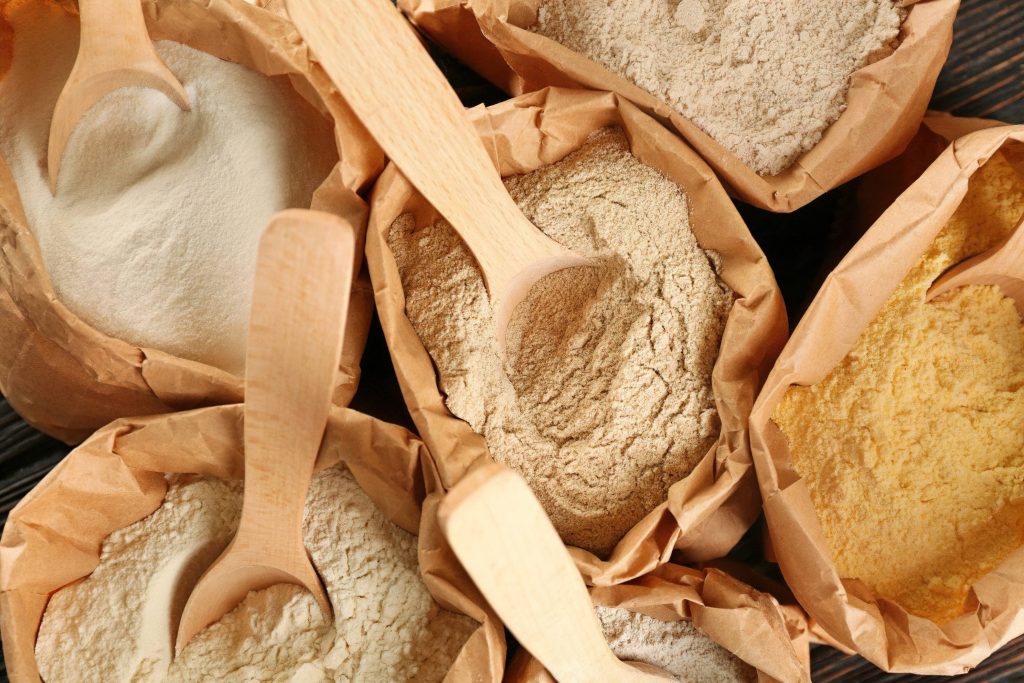Flour is a staple ingredient in many cuisines around the world, used to create an array of delicious baked goods, savory dishes, and more. With so many types of flour available, understanding their unique properties and best uses is essential for creating mouthwatering, crowd-pleasing dishes. In this comprehensive guide, we’ll delve into the world of flour, exploring different types and offering tips for cooking with each one.
- Type 1: All-Purpose Flour – The Versatile Choice
- Tips for using all-purpose flour:
- Type 2: Bread Flour – For Chewy, Structured Baked Goods
- Tips for using bread flour:
- Type 3: Cake Flour – The Secret to Light, Delicate Bakes
- Tips for using cake flour:
- Type 4: Whole Wheat Flour – A Nutritious, Hearty Option
- Tips for using whole wheat flour:
- Type 5: Gluten-Free Flour – For Those with Dietary Restrictions
- Tips for using gluten-free flour:
- Type 6: Rye Flour – A Distinctive Flavor Profile
- Tips for using rye flour:
- Conclusion: The Flour Universe Awaits
Type 1: All-Purpose Flour – The Versatile Choice
All-purpose flour is the most commonly used flour in home kitchens, made from a blend of hard and soft wheat. With a medium protein content, it strikes a balance between tender and chewy, making it suitable for a wide range of recipes, from cookies and cakes to bread and pizza dough.
Tips for using all-purpose flour:
- Sift the flour before using it in recipes to create a lighter texture.
- To create self-rising flour, combine 1 cup of all-purpose flour with 1 1/2 teaspoons of baking powder and 1/4 teaspoon of salt.
Type 2: Bread Flour – For Chewy, Structured Baked Goods
Bread flour has a higher protein content than all-purpose flour, resulting in a stronger gluten network that gives baked goods a chewy, elastic structure. Ideal for yeast bread, pizza dough, and bagels, bread flour helps create a satisfying bite and well-defined crumb.
Tips for using bread flour:
- Knead the dough well to develop the gluten network for a chewy texture.
- In recipes that call for all-purpose flour, substitute bread flour for a denser, chewier result.
Type 3: Cake Flour – The Secret to Light, Delicate Bakes
Cake flour is made from soft wheat and has a lower protein content, making it perfect for creating tender, delicate baked goods like cakes, cupcakes, and delicate pastries. Its fine texture and ability to absorb more liquid than all-purpose flour result in a light, moist crumb.
Tips for using cake flour:
- Gently fold the flour into wet ingredients to avoid overmixing, which can make the final product dense.
- If you don’t have cake flour on hand, make a substitute by combining 3/4 cup all-purpose flour with 2 tablespoons of cornstarch for every cup of cake flour required.
Type 4: Whole Wheat Flour – A Nutritious, Hearty Option
Whole wheat flour is made by milling the entire wheat kernel, including the bran and germ, resulting in a more nutritious and flavorful flour. Its higher fiber content adds a hearty, slightly nutty taste to baked goods, making it a great choice for wholesome bread, muffins, and cookies.
Tips for using whole wheat flour:
- Substitute up to half of the all-purpose flour in a recipe with whole wheat flour for added nutrition and flavor.
- Whole wheat flour absorbs more liquid than white flours, so you may need to adjust the liquid content in your recipe.
Type 5: Gluten-Free Flour – For Those with Dietary Restrictions
Gluten-free flours are made from a variety of grains, seeds, and starches, offering an alternative for those with gluten intolerance or celiac disease. Some common gluten-free flours include almond flour, coconut flour, rice flour, and oat flour. Each type of gluten-free flour has its unique properties, flavors, and textures, making them suitable for different recipes.
Tips for using gluten-free flour:
- When substituting gluten-free flours for wheat-based flours, consider using a blend of gluten-free flours or a ready-made mix for the best results.
- Adding xanthan gum or guar gum to gluten-free flour can help mimic the elasticity and structure of gluten, improving the texture of your baked goods.
Type 6: Rye Flour – A Distinctive Flavor Profile
Rye flour is made from ground rye berries and has a lower gluten content than wheat flour, resulting in a denser texture. Rye flour imparts a distinct, slightly sour flavor to bread, making it a popular choice for traditional European-style loaves like pumpernickel and rye sourdough.
Tips for using rye flour:
- Blend rye flour with wheat flour to achieve the desired texture and flavor balance in your baked goods.
- Use a sourdough starter with rye flour to enhance its natural tanginess and create a more complex flavor profile.
Conclusion: The Flour Universe Awaits
Now that you’re equipped with the knowledge of different types of flour and their uses, it’s time to experiment and create culinary masterpieces that cater to various tastes and preferences. Whether you’re baking a delicate cake or crafting a hearty loaf of bread, choosing the right flour is essential for achieving the perfect texture and flavor. Don’t be afraid to mix and match flours to create your unique blends and discover new, exciting dishes. Happy baking!

